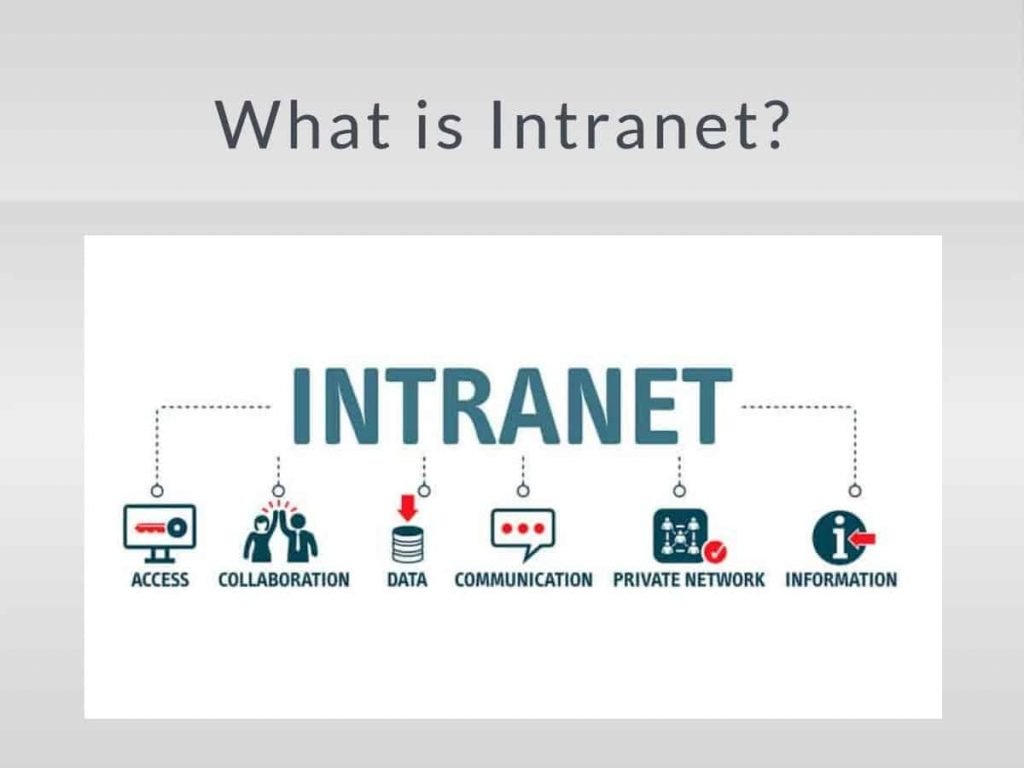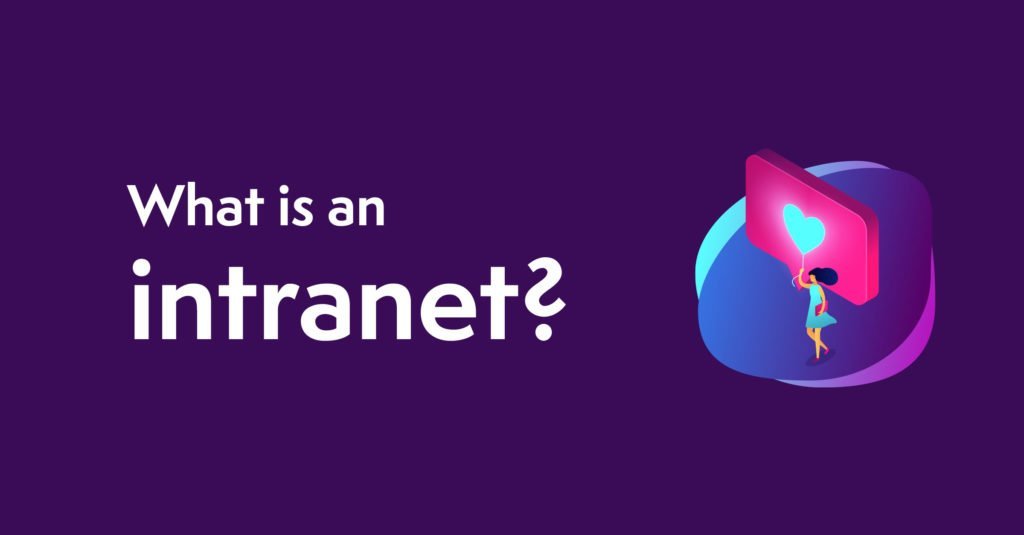Organizations rely on intranet networks as the investments and advancements in the technology enable more streamlined work-from-home settings.

The Simplest Definition of Intranet
An intranet is a closed, interconnected system that is accessible only to members (or employees) within an organization. It’s a secure network for sharing company information and computing resources. An intranet facilitates collaboration tools, operating systems, and other resources within an organization.
Intranet versus Internet
The term “intranet” is often confused with the Internet. However, there are several fundamental differences between the internet and the intranet. The primary difference between the Internet and an intranet is that an intranet is a private network, accessible only to individuals who can access a LAN or VPN network and have been authenticated and authorized to log in. In contrast, the internet is a public network that anyone can access. The Internet’s open nature may raise security problems, but the intranet offers a more secure environment. While an intranet is limited to those who have access to it, the number of intranet users can be unlimited.
Although most companies use an intranet for internal communication, it is much more than that. Many businesses establish intranets to facilitate teamwork, improve communication, increase efficiency, and enhance security.
The Primary Purpose of An Intranet
The intranet, which provides email, video, voice, instant messaging, and social media integrations to enhance internal communication, also facilitates better, faster, and safer communication and information sharing among employees. An easy content management system enables publishing, sharing updates, and news more easily and quickly. It enables multiple employees to work efficiently on the same document simultaneously, allowing them to view historical data and track their own and others’ activity. For example, it provides monitoring of which team member last edited a document and for what purpose it was shared.
It is also possible to instantly and quickly share all content, operations, and developments with all colleagues. It is recommended that information sharing be used to strengthen the brand identity and spread it securely within the network.
The Advantages of An Intranet
One of the advantages of the intranet is its cost-effectiveness. In information transmission, all businesses save on various expenses, such as maintenance, printing, and telecommunication fees, by establishing an intranet at a low cost.
The cloud-based structure of an intranet efficiently and securely gathers all work in one virtual space, regardless of its users’ locations. It provides employees with instant access to all information and documents. It is also possible to utilize the information storage feature as a communication center by storing all employee information.
Features, such as chat rooms and email, facilitate effective communication, enabling all employees to express their ideas freely. Additionally, it significantly increases productivity by allowing for quick and safe deliveries.
By utilizing web technologies, you can securely publish content on an intranet, foster a social working environment, strengthen employee bonds, and enable everyone to connect easily. An intranet, which facilitates easy connection between departments, is also a rapid mechanism for decision-making and informing team members. It is inevitable to save time thanks to cooperation.
Disadvantages of An Intranet
An intranet’s initial setup process can be complicated, despite its advantages — including unlimited access, high security, and straightforward distribution. Intranets may also require regular maintenance to keep up with the updates and provide a fast, user-friendly environment for team members.
Because it is private access support, employees may encounter problems from time to time if the necessary support update is not completed.
Self-management is also not available. Therefore, constant control by the authorized person or persons will lead to much faster and more efficient work.
Another disadvantage of the intranet is overloading. Loading lots of information can cause confusion and complexity. However, utilizing an intranet is a secure, efficient, and cost-effective network that can enhance the value of you and your business. Having an intranet network as an employer means high trust and increased profit by having strong bridges between the company and its employees.
Enhancing Intranets with an LMS
Beyond general communication and collaboration, intranets offer an ideal environment for integrating a Learning Management System (LMS). This synergy creates a centralized, secure hub for all your organization’s training and development requirements.
An LMS seamlessly integrated within your intranet allows for:
- Unified Access: Employees can access all training modules, courses, and certifications directly from their familiar intranet dashboard, often with single sign-on (SSO) for convenience.
- Secure Learning Environment: Training materials, especially those related to sensitive internal policies or proprietary information, remain within the secure confines of your private network.
- Streamlined Communication: Leverage existing intranet features, such as internal forums and chat, to facilitate learning discussions and foster a more collaborative educational journey.
- Integrated Reporting: Training progress and completion data can be easily tracked and reported alongside other internal metrics, offering a holistic view of employee development.
This integration transforms your intranet into a dynamic learning portal, enhancing employee skills and engagement within a trusted, accessible environment.
Curious how Vedubox can elevate your intranet’s learning capabilities? Contact us today to discuss a tailored solution.





















